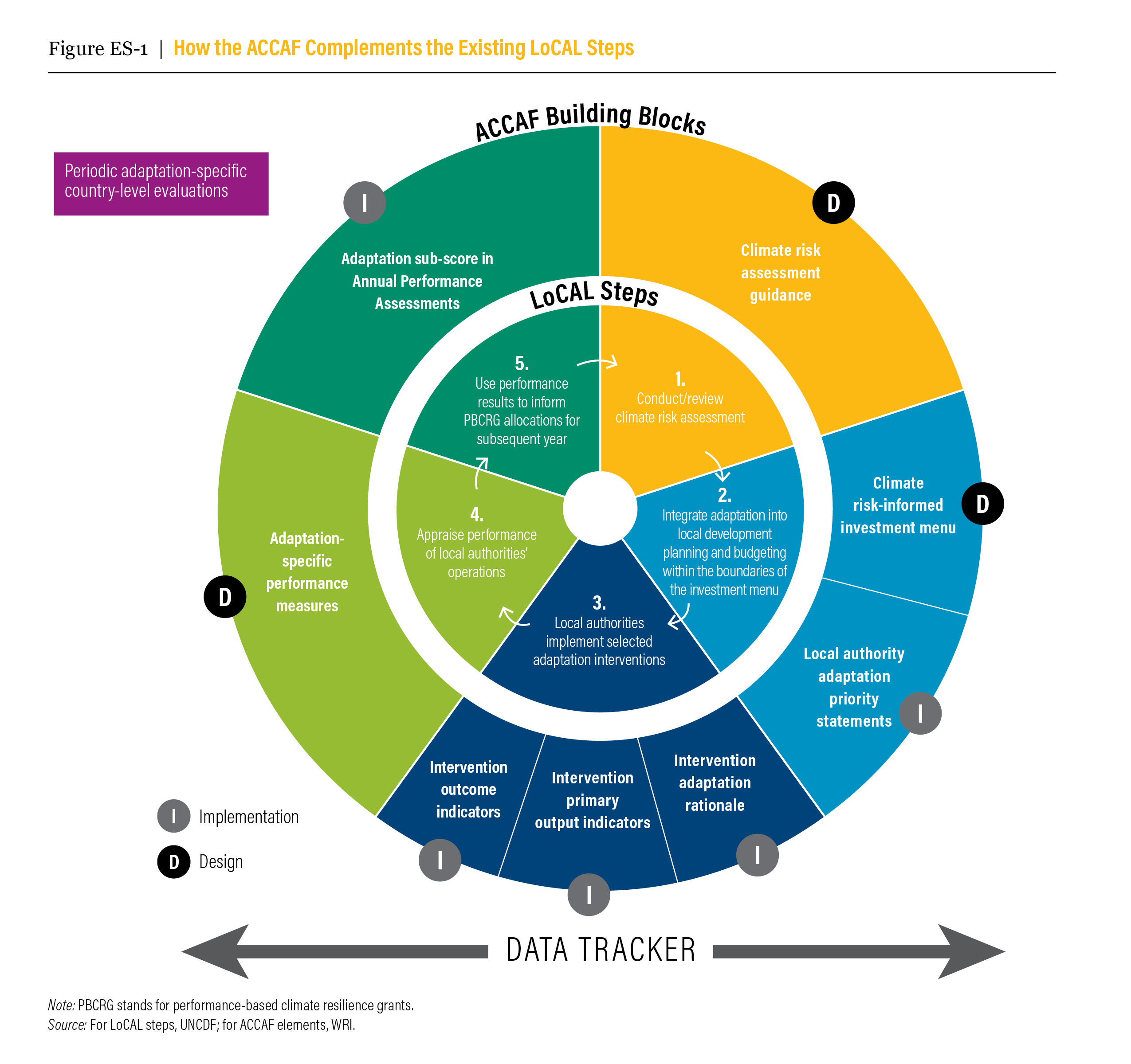Resilience Building In Least Developed Countries: Strategies For Sustainable Development

Table of Contents
Strengthening Institutional Capacity and Governance
Good governance, transparent institutions, and effective policies are fundamental for building resilience. Weak governance structures often exacerbate the impact of shocks, hindering effective response and recovery. Strengthening these institutions is paramount. This involves:
-
Promoting participatory governance models involving local communities: Engaging local communities in decision-making processes ensures that resilience-building initiatives are relevant and effective. This includes incorporating traditional knowledge and practices into disaster preparedness and response plans. For example, community-based early warning systems can be significantly more effective than top-down approaches.
-
Investing in capacity building for government officials and civil servants: Training programs focusing on disaster risk management, climate change adaptation, and sustainable development are crucial. This includes equipping officials with the skills to manage resources efficiently, implement policies effectively, and engage with international partners.
-
Strengthening anti-corruption measures and promoting transparency and accountability: Corruption diverts resources away from essential services and weakens public trust, hindering resilience efforts. Implementing robust anti-corruption mechanisms and promoting transparency in government operations are vital.
-
Improving data collection and analysis for informed decision-making: Accurate and timely data is crucial for assessing risks, planning interventions, and monitoring progress. Investing in robust data collection systems and analytical capacity is essential for effective resilience building.
-
Examples of successful institutional reforms: Rwanda's progress in improving governance and institutional capacity has enhanced its resilience to shocks. Similarly, initiatives promoting transparency and accountability in countries like Bangladesh have contributed to more effective disaster response.
Investing in Human Capital and Social Protection
Investing in human capital – education, healthcare, and social safety nets – is critical for building individual and community resilience. A healthy, educated population is better equipped to withstand and recover from adversity. Key aspects include:
-
Improving access to quality education, including vocational training and skills development: Education empowers individuals, providing them with the skills and knowledge to adapt to changing circumstances and participate more fully in the economy. Vocational training is particularly important for diversifying livelihoods and reducing reliance on vulnerable sectors.
-
Expanding access to healthcare services, particularly maternal and child health: A healthy population is more resilient to disease outbreaks and other health crises. Investing in maternal and child health is particularly crucial as these groups are often disproportionately affected by shocks.
-
Establishing effective social protection programs, including unemployment benefits, cash transfers, and food security initiatives: Social safety nets provide a crucial buffer against shocks, protecting vulnerable populations from falling into poverty. Cash transfer programs, for instance, can provide immediate relief during emergencies.
-
Promoting gender equality and empowering women: Women are often disproportionately affected by shocks and crises. Empowering women through education, access to resources, and participation in decision-making strengthens community resilience.
-
Case studies: Successful social protection programs in countries like Ethiopia, which have significantly reduced poverty and improved resilience, offer valuable lessons.
Diversifying Economies and Promoting Sustainable Agriculture
Economic diversification is crucial for reducing vulnerability to shocks. Over-reliance on a few primary commodities makes LDCs highly susceptible to price fluctuations and external market forces. Strategies include:
-
Promoting diversification beyond reliance on a few primary commodities: Developing diverse economic sectors, such as manufacturing, tourism, and technology, reduces vulnerability to shocks in specific industries.
-
Investing in sustainable agricultural practices to increase productivity and resilience to climate change: Climate-smart agriculture, including drought-resistant crops and water-efficient irrigation techniques, strengthens food security and livelihoods.
-
Developing value chains and promoting small and medium-sized enterprises (SMEs): Supporting SMEs through access to finance, training, and market linkages creates jobs, stimulates economic growth, and enhances resilience.
-
Improving access to finance and credit for farmers and entrepreneurs: Access to credit is essential for investment in productive activities and for cushioning the impact of shocks.
-
Exploring opportunities in renewable energy and green technologies: Investing in renewable energy can reduce dependence on imported fossil fuels and create new economic opportunities.
Enhancing Climate Change Adaptation and Disaster Risk Reduction
Climate change exacerbates existing vulnerabilities in LDCs. Building resilience requires proactive measures to adapt to its impacts and reduce disaster risks. This includes:
-
Investing in early warning systems and disaster preparedness measures: Early warning systems allow communities to prepare for and respond to impending disasters, reducing loss of life and property.
-
Implementing climate-smart agriculture and water management practices: These practices help farmers adapt to changing climatic conditions and ensure food security.
-
Developing climate-resilient infrastructure: Building infrastructure that can withstand extreme weather events is crucial for minimizing damage and disruption.
-
Promoting community-based disaster risk reduction strategies: Engaging local communities in disaster risk reduction efforts ensures that measures are relevant and effective.
-
Utilizing climate modeling and forecasting to improve preparedness: Accurate climate forecasts can help communities prepare for and mitigate the impacts of extreme weather events.
Fostering Regional and International Cooperation
International cooperation is essential for sharing best practices, mobilizing resources, and supporting resilience-building efforts in LDCs. Key strategies include:
-
Strengthening regional partnerships for knowledge sharing and resource mobilization: Regional cooperation facilitates the sharing of experiences and lessons learned, promoting efficient resource allocation.
-
Engaging with international organizations and development partners: International organizations can provide technical assistance, financial support, and policy guidance.
-
Advocating for fair trade practices and debt relief: Fair trade practices ensure that LDCs receive equitable prices for their exports, while debt relief frees up resources for investment in resilience-building initiatives.
-
Promoting South-South cooperation and knowledge exchange among LDCs: Sharing experiences and best practices among LDCs can accelerate progress and foster mutual support.
-
Examples of successful international collaborations: The work of organizations like the Global Facility for Disaster Reduction and Recovery (GFDRR) demonstrates the effectiveness of international collaboration in enhancing resilience.
Conclusion
Building resilience in LDCs requires a multifaceted approach encompassing strong institutions, investment in human capital, economic diversification, climate change adaptation, and robust international cooperation. These strategies are not merely development goals; they are crucial for ensuring a more stable and equitable future. Investing in resilience building in least developed countries is not only a sound economic investment but a moral imperative. Let’s work together to support initiatives that strengthen resilience and build a more sustainable and equitable future for all. Learn more about how you can contribute to resilience building in least developed countries today.

Featured Posts
-
 50 000 Fine Nba Disciplines Anthony Edwards For Fan Interaction
May 07, 2025
50 000 Fine Nba Disciplines Anthony Edwards For Fan Interaction
May 07, 2025 -
 Oscar 2024 Mick Jagger E O Medo Brasileiro De Pe Frio
May 07, 2025
Oscar 2024 Mick Jagger E O Medo Brasileiro De Pe Frio
May 07, 2025 -
 A Szineszno Aki Formalta Jenna Ortega Stilusat
May 07, 2025
A Szineszno Aki Formalta Jenna Ortega Stilusat
May 07, 2025 -
 Experience The John Wick World Become Baba Yaga In Las Vegas
May 07, 2025
Experience The John Wick World Become Baba Yaga In Las Vegas
May 07, 2025 -
 George Pickens Steelers Future An Insiders Perspective
May 07, 2025
George Pickens Steelers Future An Insiders Perspective
May 07, 2025
Latest Posts
-
 The Long Walk Trailer Adaptation Of Stephen Kings Disturbing Novel
May 08, 2025
The Long Walk Trailer Adaptation Of Stephen Kings Disturbing Novel
May 08, 2025 -
 The Running Man Glen Powells Fitness Regime And Method Acting Approach
May 08, 2025
The Running Man Glen Powells Fitness Regime And Method Acting Approach
May 08, 2025 -
 Glen Powells Running Man Transformation Fitness Character And A Three Word Mantra
May 08, 2025
Glen Powells Running Man Transformation Fitness Character And A Three Word Mantra
May 08, 2025 -
 The Long Walk Trailer Stephen Kings Bleakest Story Hits The Big Screen
May 08, 2025
The Long Walk Trailer Stephen Kings Bleakest Story Hits The Big Screen
May 08, 2025 -
 The Long Walk A First Look At The Trailer Simple But Frightening
May 08, 2025
The Long Walk A First Look At The Trailer Simple But Frightening
May 08, 2025
